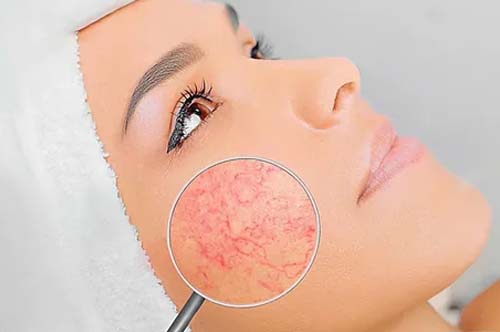Vascular Asterisks are dilated capillaries, in the form of a mesh on the skin, in the place of formation of which it sometimes itches or hurts.
Vascular Asterisks Causes:
Spider veins in women can appear for no good reason and do not carry any health hazard with them. The skin defect then requires nothing more than a cosmetic procedure.
However, serious illnesses can also be the cause:
- Varicose veins of the legs
- Connective tissue diseases
- Circulatory disorders
- Hormonal disorders
- Diseases of the reproductive system
Also, the reasons can be pregnancy, childbirth, abortion, menopause, skin damage, deficiency of vitamins and minerals, exposure to radiation on the skin (ultraviolet, x-ray). Sometimes women complain about the appearance of asterisks after taking oral contraception, deep facial exfoliation, or after sunburn. For More Information Visit Here

IMPORTANT: for men, the appearance of spider veins is always chronic venous insufficiency.
Also Read:- The Eating Habits Of Five Famous Businessmen
Symptoms:
Anesthetic defect, that is, the appearance of the stars themselves on the skin. The red or blue color of the stars indicates what kind of blood they are filled with: red – arterial, blue – venous. The same stars can change color. Asterisks can be not only in the form of stars but also be dots or lines, tree-like. Plus, there may be larger varicose veins, trophic ulcers, spots on the skin. Other accompanying symptoms: swelling and a feeling of heaviness after standing for a long time.
Treatment
To diagnose spider veins, the phlebologist examines and makes an ultrasound of the veins. If you suspect the presence of diseases that cause an asterisk, the phlebologist refers to narrow specialists
It is very important, before starting treatment for asterisks, to make the correct diagnosis and treat it. Otherwise, the asterisks will appear over and over again.
Types of treatment: vasodilator, anti-fibrotic, anti-inflammatory therapy, physiotherapy.
There are several main methods of treatment:
- Sclerotherapy is considered the most effective and safest technique. Special drugs are injected into the vein to provoke its destruction. The method does not cause side effects and complications, it gives visible results immediately. Most often used on the lower limbs or rectum.
- Ozone sclerotherapy – injection application of ozone to stimulate the restoration of damaged vessels. Cryotherapy is a treatment with low temperatures. The method consists in stimulating metabolism, the immune and endocrine systems, using a short-term effect on the body with argon and nitrogen
- Cryosclerotherapy – cold medicine is injected into the dilated vessels or asterisks. This technique, the essence of which is the “gluing” of the vessels, removes the vascular defects. Today, cryosclerotherapy is considered a more acceptable standard of treatment for vascular defects than sclerotherapy.
Photocoagulation – a point effect is used with pulsed light, through which the vascular walls are heated. This leads to blood clotting.


